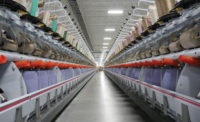State of the Hardwood Sector

Zwicker says the hardwood industry is competing for share of wallet and needs to get the next generation to aspire to having real hardwood floors.
Photo courtesy Anderson Tuftex.



While attending the National Wood Flooring Association (NWFA) trade show, I ran into Bruce Zwicker, former CEO at J.J. Haines, who is now an international consultant. The perfect guy to talk to about hardwood flooring, I enlisted Bruce in an interview which you can watch here. The following are excerpts of that interview.
TF: Talk about the status of hardwood flooring, given all of the changes we have seen in the flooring industry and the wood look-alikes:
Zwicker: In 2018, we saw a decline in the total demand in the U.S. As we know, LVT and other wood-look products have taken a bite out of the low and middle price range of engineered wood flooring products. Solid, of course, has always been in sort of a slow decline. Solid just about lasts forever, so it’s not as though the replacement rate is very high. The message is that it is a great product and it’s necessary that the story needs to be told at the high and medium end where the value to the consumer can be sold.
TF: Wood is an aspirational product. Everything wouldn’t look like wood unless people wanted wood, and I’m wondering, if salespeople had a better grip on what wood is all about and attempted to meet that consumer need for wood when they walk in a retail store, do you think that would lessen the loss?
Zwicker: Really, we are relying on the person who is selling to the consumer, or the building contractor in the commercial sector, to sell the value of wood rather than taking the easy route, which actually means getting a lower average selling price. It also means making less from installation and making less money in general. In essence, you would be shooting yourself in the foot. The NWFA has done a good job with its Real Wood, Real Life campaign, and there’s so much material that can be obtained online through their website. It also helps sell the consumer, which is going to be their next step. They help consumers find real wood, they have put out a lot of materials that are available to consumers and to people who sell wood, and the next step is to really try to reach out to the consumer, and they’re in the midst of trying to get funding from manufacturers and all those things you do when you start up a phase like this.
TF: What about the education of salespeople? I have gotten the idea from interviewing retailers that most retail sales people seem to have their favorite go-to products, and when they talk with a consumer that wants wood, many are inclined to steer the consumer to something they are more comfortable selling. Do you see this as a major part of the problem?
Zwicker: Yes, I think so because often their go-to products are lower priced products. It could be something the consumers found online and doesn’t really meet their need. A salesperson, as the expert, needs to learn about the customer’s real needs and the value they really seek to create in their home. They need to ask all of those kinds of questions to walk them up to a product that’s probably more valuable to them and more valuable to the retailer as well.
TF: What are your thoughts on reaching salespeople on a nationwide basis? Are we likely to see any large-scale change to assist them to touch the right buttons with consumers and make more money in the process?
Zwicker: I think it’s a long battle and a continuous battle. The wood organization is not going to change the tide. They are not going to get back that market share, but they can stop the losses. They can continue to make it profitable, but it’s going to take manufacturers, distributors and everybody putting in a concerted effort and realizing that is what they should be doing.
TF: What about the approach where we see a sales person looking at an inexpensive product made to look like wood and saying, “But it’s not real wood.” Is this approach happening?
Zwicker: I don’t think it’s happening to the degree it needs to happen. And then there is this whole marketing notion of waterproof. You and I and everybody in the industry knows it’s more fiction than fact. This is marketing. It’s water-resistant. If you get a whole lot of water on the floor, the subfloor is going to get wet, and it’s all coming out, and the insurance is going to cover it. It’s really water-resistant, and so we’re seeing products that are increasingly more water resistant, and that’s great particularly if they’re wood because they still get the value the wood and an improved benefit in water resistance. But, it’s going to be a tough road for people to get out there and sell it and really get behind it—but there’s money there.
TF: Is it fair to say that the higher end of the wood business is going along well?
Zwicker: Oh yes. I was talking to some people who sell solid wood and also offer refinishing, and they tell me business is fine. You know it’s a safe haven at the high and middle end but you still have to protect that and not get seduced into selling something that’s going to offer a lower average selling price. Now I’m not saying that LVTs and MLFs and SPCs and WPCs are bad products; they have a place and are going to continue to grow. I’m just saying from the wood flooring perspective— you’ve got to get your story out and get everybody involved.
TF: Do consumers look at solid wood flooring and finishing at the job site as a quality feature of the product?
Zwicker: Absolutely, and really what’s happening is that consumers are being sub-segmented. Some will see the value in it and have the disposable income to afford it, so what we’re seeing is a stratification of the consumers and what they value and what they can afford, so you’ve got to pitch it at the right level to the right consumer.
TF: Hardwood flooring is an aspirational product. I look at a typical parking lot and see cars that cost more than my first house, and I don’t think the people who own these cars are necessarily wage earners of a level that would permit them to afford cars in those price ranges. There is no doubt that this phenomenon is taking place. So is part of that answer making hardwood floors sexier so as to encourage people to invest in them?
Zwicker: You are absolutely right. Recently, I was visiting a client that had a number of younger employees, all of which were driving BMWs. They can’t afford BMWs, but it’s the thing. It’s sexy and you’ve got electronics and other things to compete with. You are competing for that share of the wallet, so somehow, you’ve got to get the next generation to aspire to have real hardwood floor, to make it sexy. You’re absolutely right.
TF: It appears that the search for a solution to the industry’s installation situation has been divided up into two sections, a soft surface and a hard surface section. Many retailers and contractors are coming up short when it comes to recruitment. How do you see the situation?
Zwicker: Relative to the wood flooring installation, as an example, most people find that is a competitive advantage if you can manage your labor and get good people and have them be part of your brand. It’s a real strength. The trick is you have to grow your own, and sometimes retailers and contractors are reluctant to train people because you’re afraid they’re going to leave and go someplace else. The NWFA has a really great apprenticeship program, a program that qualifies for government subsidies at the state level, so you get half of an apprentice’s wages paid for six months and the employee is on the hook to stay for three years because it’s vocational training. It takes away the fear that you’re going to lose them. You have to grow your own, you have to find a systematic way of doing it because otherwise you’re always going to be scrambling trying to find somebody and get some sub-quality people in the process if you’re trying to do all the work you can get.
TF: In the floor covering business, I’m under the impression that most retailers and contractors are using subcontractors to install. Is that part of the problem?
Zwicker: Yes. And we’re talking about guys that do all kinds of work and that’s what you most likely are going to get. That’s why it’s better to get your own so you can grow them and use subs as the fly wheel when you get extra business. But you have to have a core, in my opinion.
TF: What are you looking for in the hardwood flooring market in 2019?
Zwicker: I think the hardwood market could take another hit. I think it could go down again; I don’t know by how much. I hear some pretty big numbers about the decline in 2018. As you know, the statistics in floor covering are not all that accurate, so we don’t really know, but I don’t think this stops in 2019.
Looking for a reprint of this article?
From high-res PDFs to custom plaques, order your copy today!










